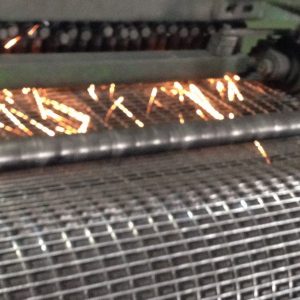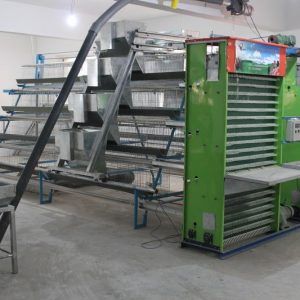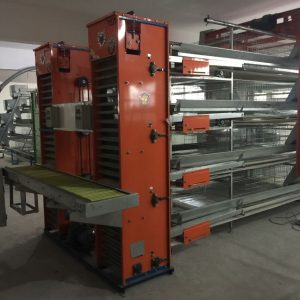
Several main points of winter laying hen breeding management
The weather in winter is relatively cold, and our majority of laying hen farmers are most concerned about how to raise their own laying hens in winter, and ensure that the egg production does not decline and no major diseases occur. According to the breeding experience and scientific research results of the majority of farmers, grasping the following points can effectively prevent our laying hens from the impact of the cold winter season on their health and egg production.
1. Breeding and management of layer hens in winter
The optimal temperature for laying hens is 16℃-24℃, and the best temperature is 20℃. When the house temperature is lower than 5 ℃, the egg production rate drops; below 0 ℃ significantly reduced. If the temperature is too low, the consumption will increase significantly. Therefore, the breeding management of winter laying hens should be based on cold protection and warmth, and comprehensive measures should be taken to increase the egg production rate of winter laying hens and improve the breeding efficiency.
1. Control the temperature. Solving the contradiction between ventilation and heat preservation is a major problem. In winter, there is a large temperature difference between day and night. It is necessary to control the temperature reasonably to minimize the impact on the hens due to sudden changes in outside temperature. At night, the temperature drops significantly, and the open-type chicken house should be well protected against cold and heat. When the temperature is low, close the windows to prevent cold winds. In addition, the temperature difference in winter is large, the air is not circulating, the air is turbid, various microorganisms are easy to grow and reproduce, and induce infectious diseases of the respiratory tract and intestinal tract. They should be ventilated and ventilated when the temperature is high at noon to maintain the freshness of the air.
2. Moisture and dehumidification. Humidity is not conducive to the insulation of the chicken house, so it is more important to keep the chicken house dry in winter. Feces in cages should be removed frequently. The water faucet in the house should be closed tightly to avoid wetting the chicken body and increasing body heat dissipation. Flat chickens can be insulated with thick litter. The litter can be chopped wheat straw, straw, corn stover, sawdust, wood shavings, rice husks, etc. The thickness of the laying should start at 10 cm, and then gradually increase, and then be completely removed after the spring of the second year; the method of diligence and diversion can also be used. In short, keep the litter dry, and never let the chicken lie on the moist bedding, so as not to increase the body heat dissipation, the lower abdomen is cold, it is easy to cause the reproductive function to decline, and the egg production is reduced. On snowy days, the snow outside the house and the sports ground should be cleared in time to avoid ice formation in the ground to facilitate drying and heat preservation.
3. Add light. Light has the effect of stimulating egg production. In winter, the day and night are long, and laying hens require 15-16 hours of light per day. Artificial light supplementation can be used to meet their needs. Once the supplementary lighting time is determined, the lights should be turned on and off on time, and perseverance must not be intermittent, so as not to cause stress to the flock.
4. Adjust the diet. In winter, the temperature is low, the heat energy consumption of the chicken is large, and the feed intake increases accordingly. In order to meet the needs of the chickens’ own consumption and egg production, the crude protein content in the diet should be kept at about 16%, and 2% to 3% should be added to the feed The oil depends on the egg production.
2. Disease prevention and control
Most of the major diseases of laying hens are most prevalent in winter and spring. There are two reasons: one is that winter and spring are suitable for the survival, reproduction and spread of most viruses and bacteria; the other is the overall level of the laying hens in our country. Poor feeding conditions and management can not keep up, the contradiction between the ventilation, temperature and humidity of the chicken house in winter has intensified, resulting in the chickens often being in the harsh environment of hypoxia, low temperature, high humidity, high ammonia, and high carbon dioxide, and the resistance to disease is reduced , So prone to various diseases. The following is a brief introduction to common diseases:
1. Ammonia poisoning. Insulation in winter, the chicken house is often kept in a closed state to reduce the invasion of cold air. The metabolism of chickens is relatively strong. It is easy to make the air of the closed chicken house turbid, the concentration of harmful gases such as ammonia and hydrogen sulfide increases, which affects the health of the chicken and is prone to respiratory diseases. If the breeder enters the house and feels that the ammonia is pungent, he must take it immediately Measures appropriate ventilation. It is necessary to organically combine cold protection and ventilation with ventilation to remove harmful gases such as ammonia, hydrogen sulfide, and carbon dioxide that stay in the chicken house in time, and replace with fresh air. When the weather is generally good, open the upper ventilation window. In cold weather, you can open the ventilation window to warm up at noon. On sunny days, you can open the window intermittently around noon for several times, about 10-30 minutes each time.
2. Diseases of the respiratory system. In recent years, the respiratory diseases of laying hens have become more serious, which has affected weight gain and egg production, and even caused the death of some laying hens, affecting the economic benefits of laying hens. The causes of respiratory diseases of laying hens are more complicated, mainly caused by environmental factors, feeding management, viruses, bacteria and mycoplasma, and the morbidity and mortality vary. Clinical manifestations include tearing, runny nose, cough, rales, open mouth breathing, and dyspnea.
Mycoplasma is the culprit of respiratory diseases, and can also be secondary to diseases such as E. coli, Newcastle disease, infectious bronchitis, and avian influenza. If these two diseases are secondary infection, respiratory symptoms will become more serious, it is difficult to treat thoroughly. In order to reduce the occurrence of respiratory diseases, we must strengthen management, reduce stress, and do a good job of immunization and disinfection of chickens during the usual feeding process.
When respiratory diseases occur in chickens, follow the following treatment principles: symptomatic treatment is the main way to prevent secondary infections; cough and phlegm, asthma; Xuanfei, reduce body temperature; enhance the physical fitness of the host, restore airway epithelial function, prevent the body The condition deteriorated.
3. Combine the epidemic situation of local diseases and do a good job of immunization. According to the prevalence of infectious diseases of laying hens in winter, we will focus on the prevention and treatment of infectious bursal disease, Newcastle disease, avian influenza and other diseases.



